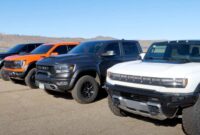In a world beset by economic and political uncertainty, it is remarkable to note the strong growth of electric cars, at least in the larger economies. Battery electric vehicles (BEVs) are rapidly emerging as real alternatives to gasoline and diesel in markets such as Europe, China and the United States.
All show great growth rates and great potential for the years to come. But if you look in detail by state (in the US) or country (in Europe), the story can take on a different perspective.
Data collected by JATO shows that demand for electric vehicles is “charged” at different rates depending on the market. How big is the gap?
Europe Two Speed

We all know that Norway is a haven for electric vehicles, which accounted for 77 percent of total registrations in September. The incentives, benefits, and convenience of buying electricity explain these results. In Norway, it is cheaper to buy an electric car than a petrol or diesel car. Further behind are neighboring Scandinavian countries, where, too, demand is strong partly due to incentives and, in general, because residents have higher purchasing power than in other European countries.
Northern Europe, along with other solid economies in the region, is what I would call fast charging Europe. These are the four Scandinavian countries, Germany, Austria, and Switzerland; France, Benelux, UK, Ireland and Iceland. Together, they account for slightly more than two-thirds of the volume of car sales in Europe.

Low-speed Europe generally consists of economies with lower per capita incomes. It includes all Mediterranean countries except France, Portugal, Central Europe to Poland, and the three Baltic countries.
While the first group of countries quickly adopted electric vehicles, the latter lags behind. For example, in the third quarter of 2022, the market share of electric cars in fast-charging countries was 15 percent. In contrast, its share fell to 3.8 percent in the slow-charging market.
Other factors explaining the gap, apart from consumer income, are lack of infrastructure, lower incentives, and gasoline prices.
ZEV Outperforms in the US

As in Europe, there are many of the same differences between states in the US. California has led the electrification race so far, thanks to tough regulations, attractive incentives, and the role of new tech companies, including Tesla.
The Zero Emission Vehicle (ZEV) program is designed to meet California’s long-term emission reduction goals by requiring automakers to offer some of the cleanest cars available for sale.

As of August 2022, 14 states have adopted California’s ZEV program and Low Emissions Vehicle (LEV) standards: Colorado, Connecticut, Maine, Maryland, Massachusetts, Minnesota, New Jersey, Nevada, New Mexico, New York, Oregon, Rhode Island, Vermont , Virginia, and Washington.
And guess what? Electric car adoption in these states is significantly higher than in other states. In the second quarter of 2022 (latest data available), the market share gap between ZEV and non-ZEV states was 8.7 percent versus 3.0 percent. Electric car sales in the 15 ZEV states accounted for 62 percent of the country’s total sales. In contrast, they account for 36 percent of the total light vehicle market in the US.
The author of the article, Felipe Munoz, is JATO dynamics Automotive Industry Specialist



